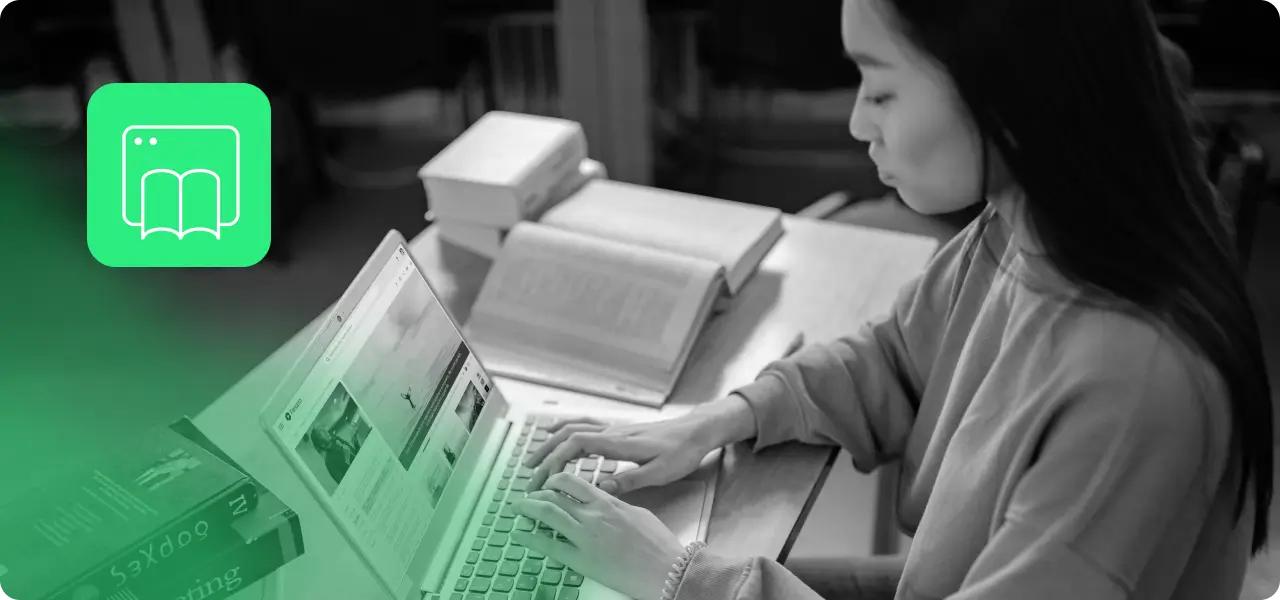- Academic Technology
Understanding Blended Learning Models: Enhancing Education Through Integration

Blended learning, also called hybrid learning, merges traditional classroom teaching with digital learning experiences. This approach increases flexibility, supports various learning styles, and allows students to engage with content at their own pace.
Educational institutions and corporate training programs use blended learning models to improve outcomes. Below, we explore four primary blended learning models, their benefits, and best practices for implementation.
1. Rotation Model
The rotation model allows students to cycle between different learning methods, such as online lessons, group activities, and teacher-led instruction. These rotations can be scheduled at fixed times or adjusted based on student progress.
Types of Rotation Models
- Station Rotation – Students move between different learning stations that may include online learning, collaborative projects, and one-on-one instruction.
- Lab Rotation – Online learning takes place in a designated computer lab, while the rest of the coursework is taught in a traditional classroom.
- Flipped Classroom – Students watch instructional videos or review materials at home, then use class time for discussions, problem-solving, and hands-on activities.
- Individual Rotation – Each student follows a personalized schedule, rotating between learning activities based on their needs.
When to Use the Rotation Model
- Works well for classrooms with limited technology access since students share resources.
- Helps teachers provide differentiated instruction by allowing personalized learning experiences.
- Ideal for subjects that require a combination of online learning and hands-on application.
2. Flex Model
The flex model is a self-paced approach where students primarily learn online, with teachers available to provide support as needed. Unlike traditional models, students do not follow a fixed schedule and can move through coursework at their own speed.
Key Features of the Flex Model
- Students access lessons and assignments online, progressing at a pace that suits them.
- Teachers act as mentors, providing individualized support rather than delivering lectures.
- Works well in competency-based education programs where students advance after mastering a concept.
Who Benefits Most from the Flex Model?
- Independent learners who prefer flexibility over a rigid classroom structure.
- Schools and training programs looking to reduce mandatory classroom time.
- Students who need additional support in some subjects while excelling in others.
3. A La Carte Model
The a la carte model allows students to take some courses online while continuing traditional in-person classes for other subjects. This is often used to expand course offerings, allowing students to study topics that may not be available at their school.
Advantages of the A La Carte Model
- Increases access to advanced coursework, such as AP classes or college-level subjects.
- Offers flexibility for students with scheduling conflicts or extracurricular commitments.
- Helps learners who need an alternative learning method for specific subjects.
Best Use Cases for the A La Carte Model
- High school students supplementing their education with online courses.
- Training programs offering specialized certifications.
- Organizations providing professional development options for employees.
4. Enriched Virtual Model
The enriched virtual model blends online coursework with scheduled in-person sessions. Unlike the flipped classroom model, students do not attend school every day but instead participate in planned face-to-face meetings for discussions, labs, or assessments.
Characteristics of the Enriched Virtual Model
- Students complete the majority of coursework online at their convenience.
- In-person meetings are required for collaborative activities, teacher check-ins, or project-based learning.
- Balances flexibility with the benefits of real-world interaction.
Who Should Consider the Enriched Virtual Model?
- Adult learners and professionals taking online courses while balancing other commitments.
- Schools implementing hybrid learning strategies for students needing more flexibility.
- Organizations offering training that combines independent study with interactive workshops.
Key Benefits of Blended Learning Models
Blended learning provides a range of advantages for both students and educators.
- Personalized Learning – Students have more control over their pace, schedule, and preferred learning style.
- Increased Engagement – A mix of online and face-to-face activities helps maintain interest and motivation.
- Better Accessibility – Digital tools allow students in remote locations or with special needs to access education more easily.
- Data-Driven Insights – Online platforms provide analytics that help teachers track progress and tailor instruction accordingly.
Challenges and Considerations
Despite its benefits, blended learning comes with challenges that should be addressed to ensure success.
- Technology Access – Not all students have reliable internet or access to necessary devices.
- Teacher Training – Educators need the right skills to manage and optimize a blended learning environment.
- Student Self-Discipline – Some learners may struggle with self-paced online learning and need guidance to stay on track.
- Course Design – Online materials should be engaging, structured, and aligned with in-person instruction.
How to Successfully Implement a Blended Learning Model
A thoughtful implementation strategy is key to making blended learning effective.
- Assess Readiness – Ensure that infrastructure, technology, and staff are prepared for blended learning.
- Engage Stakeholders – Collaborate with educators, students, and administrators to align expectations.
- Provide Training – Offer professional development to help teachers integrate technology effectively.
- Monitor and Adjust – Use data and feedback to refine the learning experience over time.
- Make Content Mobile-Friendly – Many students access coursework on mobile devices, so materials should be optimized for different screen sizes.
Conclusion
Blended learning is reshaping education by integrating technology with traditional instruction. Whether through rotation, flex, a la carte, or enriched virtual models, educators can create dynamic learning experiences that adapt to students’ needs.
By addressing common challenges and following best practices, schools and organizations can make blended learning an effective tool for improving engagement, accessibility, and overall learning outcomes.
Experiment with new blended learning models with Panopto
If you’re curious about how you can use video for blended learning at your institution, contact us to request a free, full-featured demo.



